A PVC door, also known as plastic door is a door made of polyvinyl chloride (PVC), a type of plastic. PVC doors are known for their durability, low maintenance, and resistance to moisture, making them a popular choice for use in homes, commercial buildings, and industrial settings. They are also often less expensive than traditional wooden doors.
PVC doors can be made to look like wood, but they are not as heavy as wooden doors. They also have a more consistent color and texture, and they do not require painting or staining.
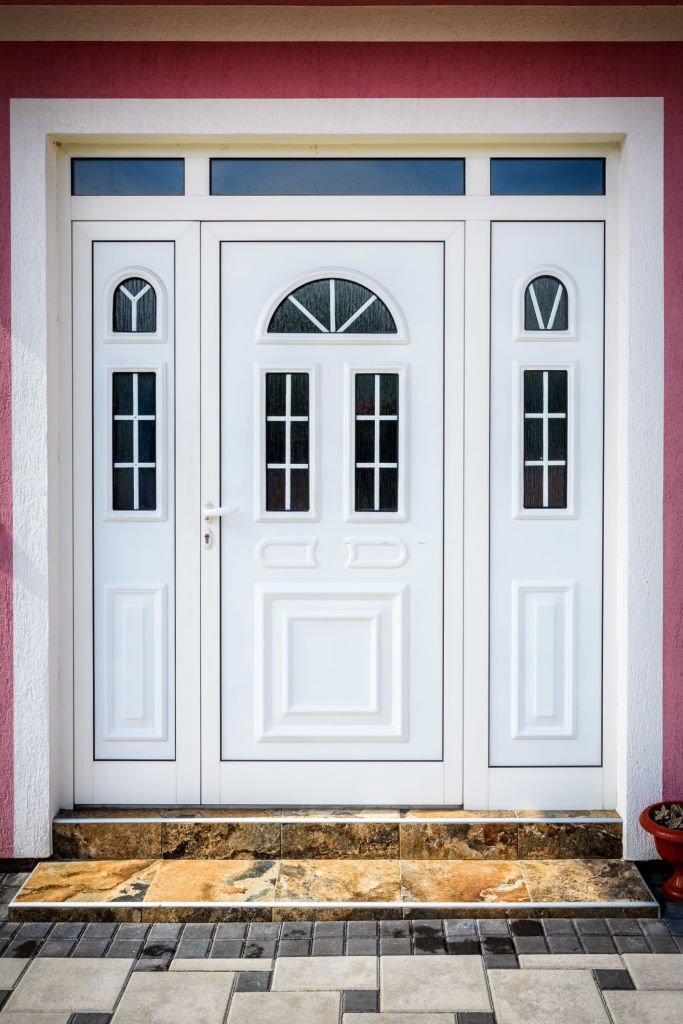
How to install PVC door?
Installing a PVC door involves several steps, including measuring and preparing the doorway, cutting the door to size, and attaching the door to the frame. It’s important to have the right tools and to follow the manufacturer’s instructions for the specific door you are installing. The process is relatively simple, but it does require some level of DIY skills and attention to detail.
Here are the general steps to install a PVC door:
- Measure the doorway: Measure the width and height of the doorway to ensure that the door you purchase will fit properly.
- Prepare the doorway: Remove any existing door and door frame, and make sure that the rough opening is level and square.
- Cut the door to size: If necessary, cut the PVC door to the proper size using a saw. Be sure to measure and mark the door carefully to ensure an accurate cut.
- Install the door frame: If a new door frame is required, install it into the rough opening. Make sure that the frame is level and square, and that the frame is properly anchored to the rough opening.
- Install the door: Place the PVC door into the frame, making sure that it is level and square. Attach the door to the frame using screws or other hardware as recommended by the manufacturer.
- Adjust and test: Test the door to make sure it opens and closes smoothly. Make any necessary adjustments to the hinges or strike plate to ensure a proper fit.
- Finish the installation: Once the door is properly installed, you can add weatherstripping or a threshold as needed.
It’s important to note that the installation process may vary depending on the specific type of PVC door, the type of frame, the type of hinges and other hardware used, the location and the condition of the existing frame. So, it’s always a good idea to follow the instructions that come with the door or consult with a professional if you are unsure of how to proceed.
PVC Door FAQs
Is pvc door waterproof?
PVC (polyvinyl chloride) doors are resistant to water and moisture, but they are not completely waterproof. PVC is a type of plastic that is known for its resistance to moisture, but it may still absorb water over time, which can cause warping or swelling.
However, PVC doors can be designed with a water-resistant seal around the edges and between the panels to prevent water from seeping through. This can help to protect the door from water damage and prolong its lifespan.
It’s important to note that PVC doors should not be exposed to standing water or submerged in water. If a PVC door is used in an area where it is likely to be exposed to water, it’s important to make sure that the door is properly sealed and installed to prevent water from seeping in. Also it’s important to make sure that any leaks or moisture issues in the home are fixed promptly, it will help to prevent water damage to the door.
Can PVC Door be painted?
PVC doors can be painted, but it may not adhere well and may not last as long as paint on a wood or metal door. Additionally, because PVC is a type of plastic, the paint may not bond well to the surface, and it may peel or flake off over time. It is best to use a paint that is specifically designed for use on PVC and to properly clean and prep the surface before painting.
Can PVC Door Trim be painted?
Yes, PVC door trim can be painted, but it’s important to note that it might not adhere well and may not last as long as paint on wood or metal trim. It’s best to use paint that is specifically designed for use on PVC and to properly clean and prep the surface before painting. Also, because the paint on PVC trim may not last as long as on wood or metal trim, it may be necessary to reapply paint more frequently to maintain the desired appearance.
Can PVC Doors be repaired?
Yes, PVC doors can be repaired, but the nature of the repair will depend on the type and severity of damage. Minor scratches and scuffs can be repaired with a PVC repair kit or by sanding and repainting the affected area. More extensive damage, such as cracks or warping, may require replacement of the affected panel or the entire door.
Also, It’s important to note that as PVC is a thermoplastic material, it has a tendency to become brittle over time, especially when exposed to UV light or extreme temperatures. So, if the door is old or has been exposed to harsh conditions, it may not be repairable, and replacement may be the best option.
Can PVC Doors be cut?
Yes, PVC doors can be cut, but the process depends on the thickness and the type of PVC used. For thin PVC sheet, a utility knife or a saw can be used to make precise cuts. For thicker PVC, a circular saw or a jigsaw with a fine-toothed blade can be used to make cuts. It’s important to make sure that you have the right tools, and to use them properly to ensure a clean and precise cut. Also, cutting PVC generates dust, it’s important to use mask and eye protection.
Can UPVC Doors warp?
UPVC (Unplasticized Polyvinyl Chloride) doors, like most doors, can warp over time, especially if they are exposed to high levels of moisture or heat. Warping occurs when the door is not level and plumb anymore, this can happen because the door twisted or bent. Warping can cause the door to not close or lock properly, or to create gaps around the door frame.
UPVC is a type of plastic that is known for its resistance to moisture, which can make it less prone to warping than other materials. However, if a UPVC door is exposed to excessive moisture, it can warp over time. To prevent warping, it’s important to install the door properly, and to make sure that it is weather-tight and sealed against the elements.
Also, if the door is already warped, it may not be repairable and may need to be replaced.
Can UPVC Doors swell?
UPVC (Unplasticized Polyvinyl Chloride) doors can swell if exposed to high levels of moisture. Swelling occurs when the door absorbs water and expands, which can cause the door to become distorted or to not fit properly in the frame.
Can UPVC Door Frames be trimmed?
Yes, UPVC (Unplasticized Polyvinyl Chloride) door frames can be trimmed, but it requires the use of proper tools and techniques. Cutting or trimming UPVC is similar to cutting PVC pipe, a fine-toothed saw or a jigsaw can be used to make precise cuts. The process of trimming UPVC frames can be difficult, It’s important to have experience with cutting and working with UPVC, and to use proper safety equipment, such as goggles and mask, to protect yourself from dust and debris.
Can UPVC Door Frames be repaired?
UPVC (Unplasticized Polyvinyl Chloride) door frames can be repaired, but the nature of the repair will depend on the type and severity of damage. Minor scratches, dents, or scuffs can be repaired with a UPVC repair kit or by sanding and repainting the affected area. More extensive damage, such as cracks, warping, or swelling, may require replacement of the affected panel or the entire frame.
Categories to explore PVC Door
- PVC Folding Door
- Decorative PVC Door
- PVC Fiber Door
- PVC Solid Doors
- PVC Laminated Door
- Wooden PVC Door
- PVC Panel Doors
- PVC Membrane Door
- PVC Hinged Door
A Decorative PVC Door is a PVC door that has been designed with decorative features such as patterns, engravings, or moldings. The door can be made to look like wood or other materials, but it is less heavy and more affordable than traditional wooden doors. This type of door is commonly used in residential settings to add a decorative touch to a room or to complement the overall design of a home.
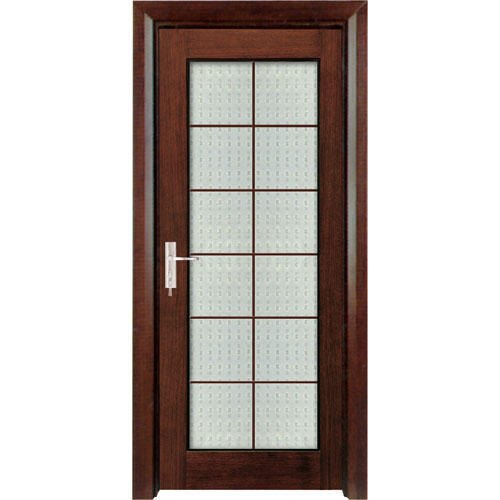
A PVC Folding Door is a door that is made of PVC and is designed to fold in sections, similar to accordion doors. This type of door is commonly used in residential or commercial settings to divide rooms or to provide privacy. PVC folding doors can be made to look like wood or other materials, but they are less heavy and more affordable than traditional wooden folding doors. They are also easy to install and maintain. They are easy to operate, and they save space as they do not require any clearance area when opened.
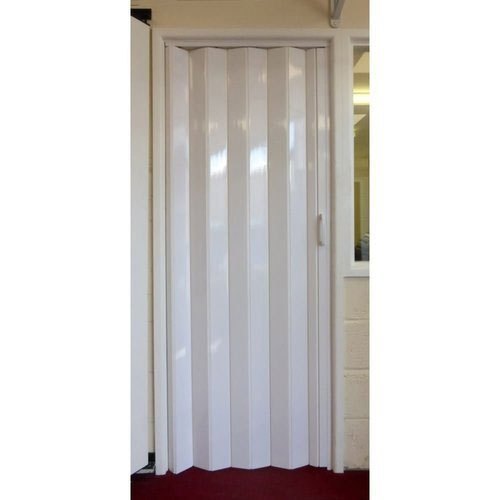
A PVC Fiber Door is a door that is made of PVC and reinforced with fiberglass. This type of door is more durable and more resistant to impact than a standard PVC door. PVC fiber doors are commonly used in industrial or commercial settings where the door is exposed to heavy use or impact. They are also fire-resistant.
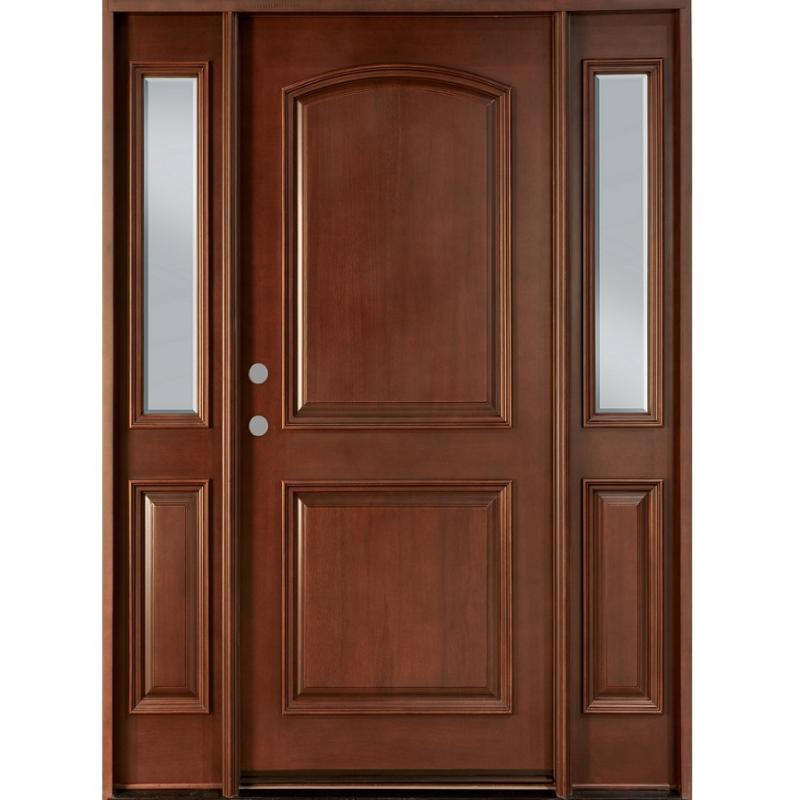
A PVC Solid Doors is a door that is made entirely of PVC, it has no hollow core. This type of door is more energy-efficient and provides better insulation and soundproofing than hollow core PVC doors. They are also commonly used in residential or commercial settings for extra security and privacy.
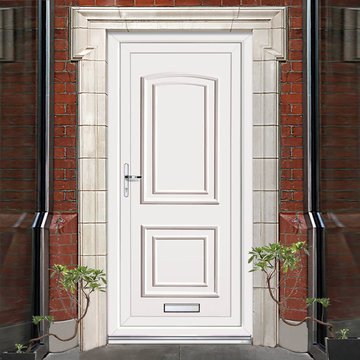
A PVC Laminated Door is a door that is made of a layer of PVC laminated on top of a core made of MDF or HDF. This type of door is more durable and resistant to scratches and impacts than a standard PVC door. PVC laminated doors can also be made to look like wood or other materials, but they are less heavy and more affordable than traditional wooden doors. They are also easy to maintain.
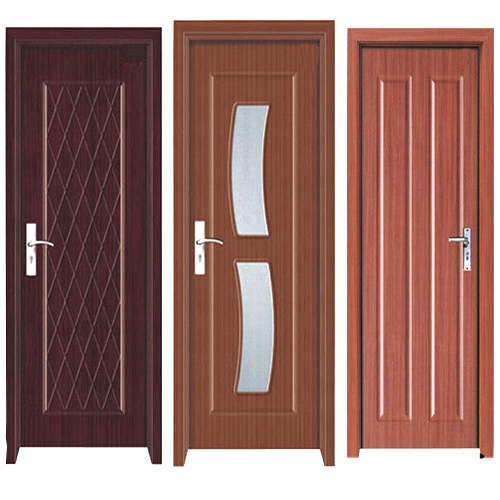
A Wooden PVC Door is a door that is made of PVC and designed to look like wood. This type of door is less heavy and more affordable than traditional wooden doors and is also resistant to moisture, which makes it less prone to warping or swelling. They are also easy to maintain, they can be painted or stained in a variety of finishes, and they require less maintenance than traditional wooden doors.
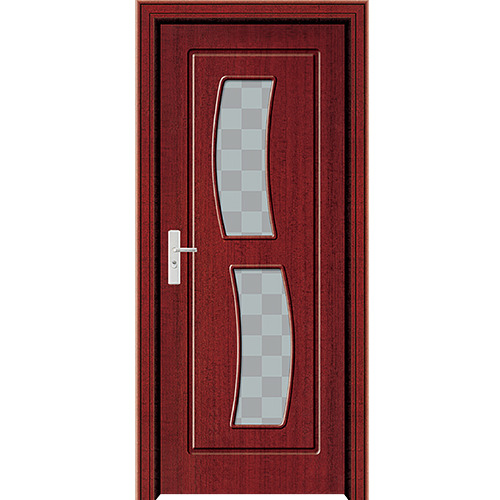
A PVC Panel Doors is a door that is made of PVC and designed with panels. This type of door is commonly used in residential or commercial settings to add a decorative touch to a room or to complement the overall design of a home. PVC panel doors can also be made to look like wood or other materials, but they are less heavy and more affordable than traditional wooden panel doors.
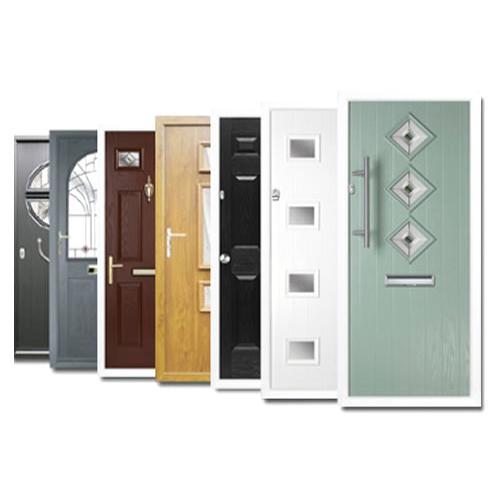
A PVC Membrane Door is a door that is made of PVC and designed with a flexible membrane that covers the surface. This type of door is commonly used in industrial or commercial settings to provide a barrier against dust, noise, or other environmental factors. PVC membrane doors can also be made to look like wood or other materials, but they are less heavy and more affordable than traditional wooden membrane doors.
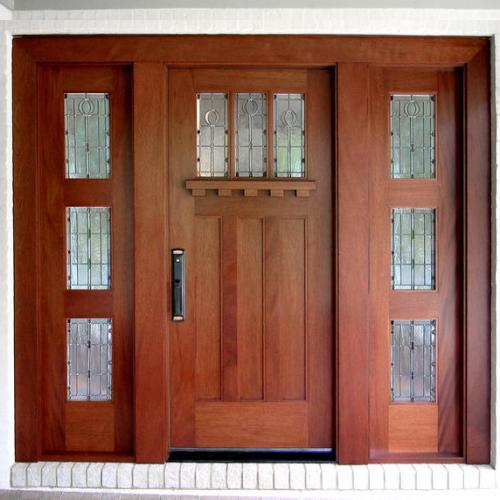
A PVC Hinged Door is a door that is made of PVC and hung on hinges. This type of door is commonly used in residential or commercial settings to provide a barrier against dust, noise, or other environmental factors. PVC hinged doors can also be made to look like wood or other materials, but they are less heavy and more affordable than traditional wooden hinged doors. They are easy to open and close and they can be used as an entry door or as a room divider.
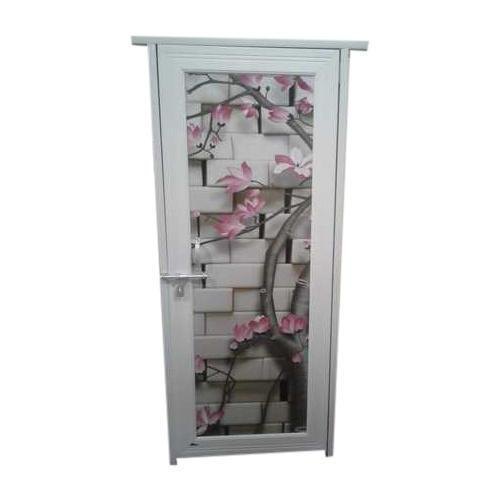
PVC Door By Surface Finishing
A Polished PVC Door is a PVC door that has been given a glossy finish by polishing the surface with fine abrasives. This process removes any imperfections in the surface and makes it smooth and shiny. The result is a door that has a glossy, reflective surface that is easy to clean and maintain. Polishing can be done by hand or by machine, which provides a consistent finish and a long-lasting shine. This type of finish is commonly used on PVC doors that are used in high-traffic areas or in areas where appearance is important.
A Glossy PVC Door is a PVC door that has been given a glossy finish by applying a glossy coating or paint to the surface. This process gives the door a shiny, reflective surface that is easy to clean and maintain. The glossy coating or paint can be applied to the entire door or just to specific areas to create a desired look. This type of finish is commonly used on PVC doors that are used in high-traffic areas or in areas where appearance is important.
A Powder Coated PVC Door is a PVC door that has been given a finish by applying a dry powder coating to the surface. This coating is typically made of a mixture of resin and pigments that is electrostatically applied to the door surface and then cured under heat to form a durable finish. This process provides a consistent, even finish with a high level of durability and resistance to scratches and impacts. This type of finish is commonly used on PVC doors that are used in industrial or commercial settings.
A Moulded PVC Door is a PVC door that is made by injecting a PVC mixture into a mould. This process allows for the creation of doors with intricate designs and details, such as paneled or raised panel doors. This process allows for the creation of a door with an authentic looking wood grain finish, this door is not only cheaper but also more resistant to scratches and dents, and easy to maintain. This type of finish is commonly used on PVC doors that are used in residential or commercial settings.
PVC Door By Use
- PVC Bathroom Door
- PVC Flush Door
- PVC Pooja Room Door
- PVC Glass Door
- PVC Partition Door
- PVC Moulded Doors
- PVC Coated Door
- High Speed PVC Door
- PVC Flap Doors